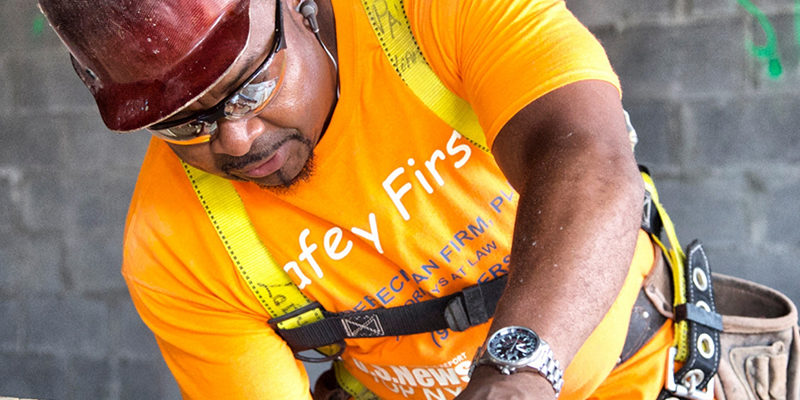Triax understands the complexities of an active construction site, which is why we work every day to streamline processes, boost safety, and unlock efficiencies. A dedicated project team works with you from pre-deployment/ground break all the way through project completion. Check out this special “Faces from the Field”/”Toolbox Talk” crossover as we catch-up with Triax Client Engagement Specialist James Caruso!
Why did you want to get your OSHA 30-hour training certification?
OSHA 30 will soon be the new safety training standard for the construction industry, and when I am on site, I want to make sure I am up to date on all safety regulations. It is considered advanced safety training and is more in-depth on a number of different topics, including identifying jobsite hazards/unsafe conditions that I may not have been previously aware of (and that are meant for supervisors and safety directors.) I’d recommend OSHA 30 to anyone working on site, regardless of experience or job level.
What’s one safety best practice you’ve seen on the jobsite?
Stretch & Flex sessions. These typically take place 5-10 minutes prior to the start of the workday and allow workers to prepare both physically and mentally. It’s also a great opportunity to discuss safety-related issues with the entire workforce. Earlier this week, for example, I was on site during a toolbox talk focus on snow and ice. Increasing awareness to upcoming weather and the proper safety precautions can make a huge difference in keeping the site as safe as possible.
Is there one key safety takeaway you’ve gathered in your year-plus on the job?
The biggest takeaway I have is both the simplest and easiest to take for granted: being aware. Taking your time and being aware of your surroundings is the best way to avoid injury, but complacency and/or rushing can and will happen, so what helps the most is regular, clear communication. Whether it’s updates to jobsite hazards, weather changes or PPE checks, communicating these topics on a daily basis (and throughout the workday) is key.
To expand upon that, communication is vital to jobsite safety but can be hard to accomplish for a myriad of reasons. First, jobsites can be very large, spanning many acres and/or floors, which makes it difficult to reach all workers simultaneously. A lot of people mention cell phones, but there can be a lot of issues with service (especially at higher elevations and rural areas) as well as language barriers. Finding a way to communicate with workers no matter where they are on a jobsite and independent of cell phone use is crucial. This is really where technology and data come into play. The Spot-r network boosts communication between workers and supervisors and is a partner in jobsite safety without the use of cell phones. The worker-worn Spot-r Clip can be used to signal for help by pushing the alert button and the device also receives evacuation alarms initiated by project leaders in the event of an emergency.
What’s the most exciting product or feature update from the last year?
I continue to love the Spot-r EquipTag and the data it provides. Having real-time visibility into where your large equipment is on site is significant by itself, but pairing that with how often it’s being used, who is operating it and whether or not they’re certified to do so changes the game. This information is used to send notifications if an unauthorized worker is using the equipment, helping to manage compliance and mitigate risks associated with improper equipment usage.
Top Construction Safety Articles You May Have Missed (and Need to Read) from 2018
Safety Leadership: Time to evolve: What the modern safety program needs to address via Safety and Health Magazine
Caution: Falls Likely | Wearable Technology is Opening Employers’ Eyes to Danger Zones via Leader’s Edge Magazine
What is EMR in Construction? (And How Construction Safety Affects Your Bottom line) via Connect & Construct
How data, tech and ‘heart’ can mitigate jobsite safety risks via Construction Dive
The Rise of Risktech: How Startups Are Saving Lives and Property in Construction via Insurance Journal

